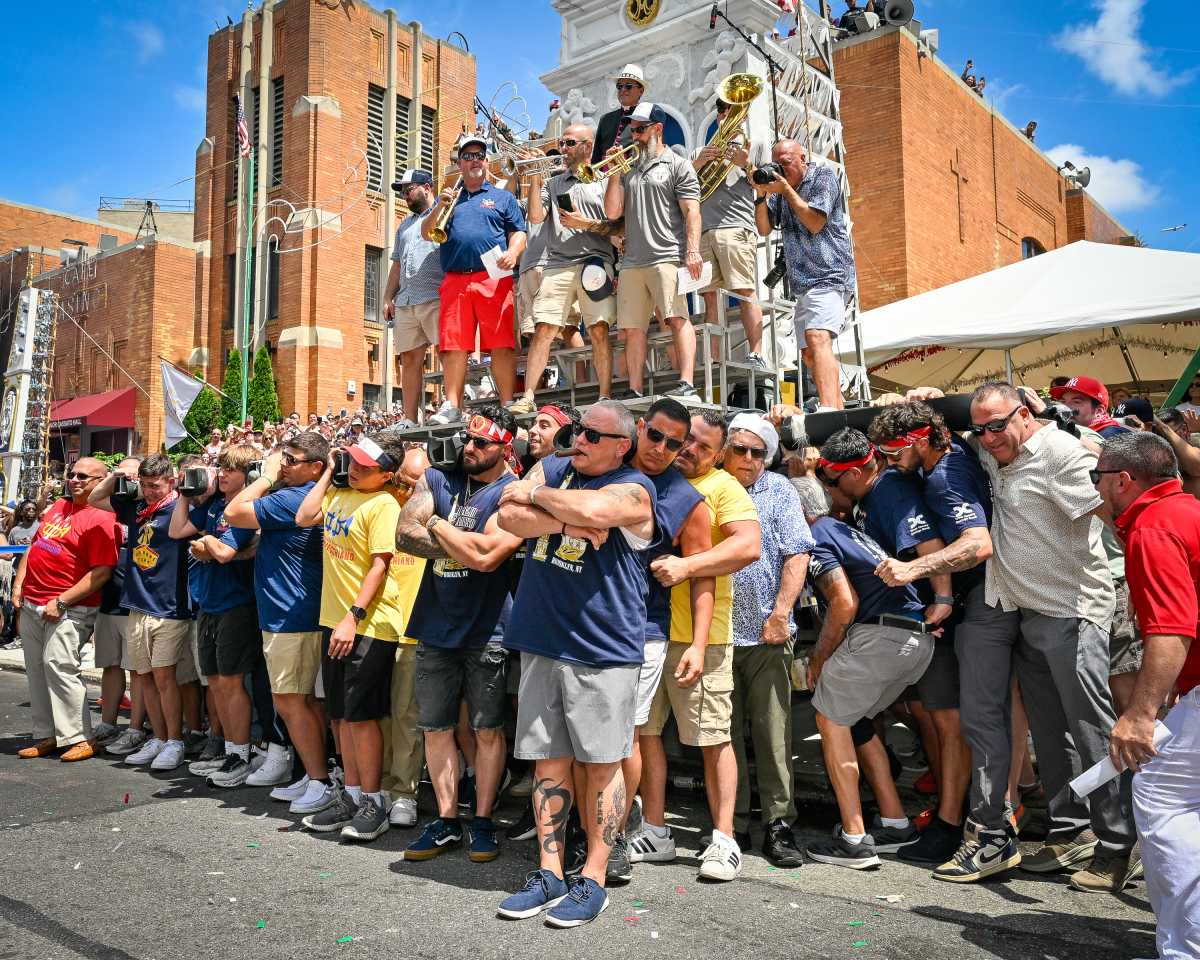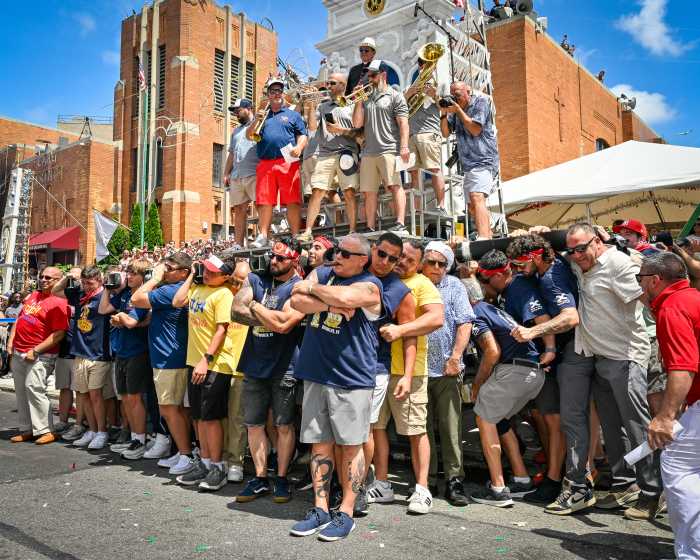By Lincoln Anderson
The Boys’ Club of New York’s planned sale of its Milliken Clubhouse at E. Houston and Pitt Sts. must be approved by the city’s department of Housing Preservation and Development and the property must be developed for nonprofit, community facility or institutional uses.
Although the Boys’ Club apparently had thought that perhaps only a small part of the site was governed by these regulations, H.P.D. last week confirmed that 100 percent of the clubhouse site is subject to them.
H.P.D. said that the site can’t be developed for a market-rate high-rise residential project, for example. Virginia Gleidman, an H.P.D. spokesperson, said the whole Boys’ Club building is within the El Pueblo Nuevo urban renewal site. The site is further bound by a deed restriction.
The urban renewal site, a single block bounded by E. Houston, Stanton, Bridge and Pitt Sts., was designated in 1975 and its regulations amended in 1983. The urban renewal plan designated the Boys’ Club site for institutional use, further defining it as a community facility. The urban renewal plan expires in 2015, but a deed restriction states that the site must be subject to the urban renewal plan restrictions and must be owned by a nonprofit organization in perpetuity.
“It doesn’t mean that H.P.D. is going to be an ogre,” said Gleidman, of the sale restrictions. “But it’s a pretty heavy responsibility. We’re going to meet with the Boys’ Club and lay it all out.”
Facilities allowed under “institutional use” include recreational, church/monastery and community center — in short, “very limited,” noted Gleidman.
Under the urban renewal plan, the rest of the block was developed with 172 units of low-income, rent-subsidized Section 8 apartments and a parking lot.
The Boys’ Club plans to move its programming out of the Pitt St. clubhouse by Friday, and will consolidate its Lower East Side programs at its E. 10th St. and Avenue A clubhouse, though limited programming will still continue at Pitt St. Shuttle service from Pitt St. to the Harriman Clubhouse on 10th St. will start in late September.
Councilmember Margarita Lopez had been outraged at the possibility of the Boys’ Club selling the Pitt St. property for profit for private development. She noted that the club had acquired the property at a very low cost from the city following the designation of the urban renewal zone. In fact, the Boys’ Club paid $8,000 at the time, 1984, when the market price for the one lot was $65,000, according to H.P.D.
However, last week, Lopez said she had since recalled a deed restriction that Community Board 3 put in place on the Boys’ Club at the time of the purchase of the lot.
“I was on Community Board 3 when this happened,” Lopez said. “I remember very visibly, there were restrictions put in place. Number one, they can’t sell it except to a nonprofit organization; number two, they can’t sell without consent and agreement of H.P.D.; number three, it had to be operated by a nonprofit for community services only.”
Lopez said she and other board members, including Lisa Kaplan and the late Armando Perez, pushed for the restrictions on the site.
“We had an eye in the future,” said Lopez. “All along as we were working to improve this neighborhood with affordable housing, we knew this neighborhood would catch the eye of the developers. It’s for that reason we did this…. We were right and we predicted the future.”
Contacted early last week, Brad Zervas, the Boys’ Club’s executive director, maintained that only approximately 15 percent to 18 percent of the site’s footprint was governed by the covenant stipulating nonprofit use, and that after 2015 that section could only be sold to a nonprofit. The other 85 percent, he maintained, could be developed privately.
However, yesterday, Zervas said he’s no longer certain about this.
“There has to be conversation between the Boys’ Club and H.P.D.,” he said. The Boys’ Club apparently doesn’t fully accept H.P.D.’s interpretation.
“What I would say to you is, given the dynamics of the footprint, there’s plenty of room for interpretation,” Zervas said. “There have been amendments made by H.P.D. along the way. I think there have been precedents set, precedents broken. Since I spoke to you last time I don’t know what to tell you anymore.”
Zervas said the Boys’ Club had not yet spoken to any developers or nonprofit organizations about buying the site.
H.P.D.’s Gleidman said the department’s planning staff hoped to meet with the Boys’ Club this week. But Zervas said the meeting will be after Labor Day.
Lopez has suggested that local community youth organizations, like the Lower East Side Girls Club, which lacks a clubhouse, could take over the Milliken Clubhouse after the Boys’ Club leaves.
But Lynn Pentecost, the Lower East Side Girls Club’s executive director, said they would prefer to build their own clubhouse on property on which they have site control on Avenue D. She suggested instead that the Parks Department take over the Boys’ Club and turn it into a recreation center so that the Lower East Side has a city-operated, affordable facility for year-round swimming and sports, like Asser Levy on E. 23rd St. and Carmine Recreation Center on Seventh Ave. S. Hamilton Fish, on the other side of Pitt St., only has an outdoor pool eight weeks a year and no indoor pool and scant indoor facilities of any kind, she noted. Pentecost said the Girls Club would run swimming classes for its members at such a facility. She said she plans to start a campaign calling on the Parks Dept. to take over the building.
“In good conscience, how can they be running pool hours 52 weeks in Gramercy and Stuyvesant Town and in the Village, and how come the Lower East Side gets eight weeks a year?” Pentecost asked of the Parks Dept. “We need weight-training rooms, we need yoga rooms. There’s an epidemic here between asthma, obesity. Any kind of recreation builds the immune system. It’s a no-brainer.”
A Parks Dept. spokesperson said they can’t comment on such a plan without first talking to the interested parties.
Pentecost said they plan to break ground on the Girls Club site next May. She said if they don’t put in a pool they would save $5 million. They are raising $10 million for the project and already have $2 million, including $400,000 from Rep. Nydia Velazquez, $950,000 from the city and the rest from four private foundations. Meanwhile, the Boys’ Club on E. Houston St. has a northern glass-block wall in need of extensive repair.
“That Boys’ Club building is not a fabulous building,” she added. “It’s an ’80s building with ’70s architecture. Why should we take a second-hand hand-me-down when we can build what we want?”
































